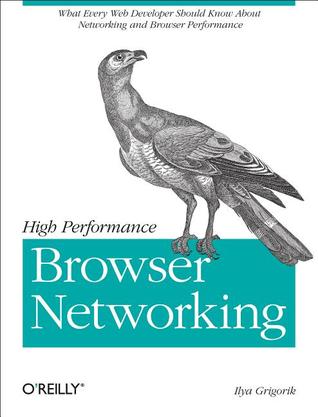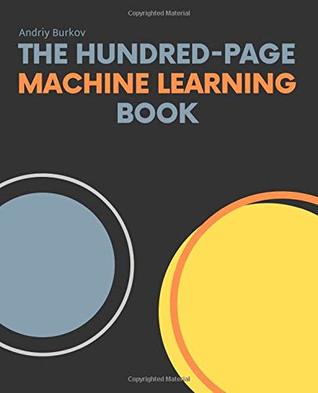Want to know how the best software engineers and architects structure their applications to make them scalable, reliable, and maintainable in the long term? This book examines the key principles, algorithms, and trade-offs of data systems, using the internals of various popular software packages and frameworks as examples.
Tools at your disposal are evolving and demands on applications are increasing, but the principles behind them remain the same. You'll learn how to determine what kind of tool is appropriate for which purpose, and how certain tools can be combined to form the foundation of a good application architecture. You'll learn how to develop an intuition for what your systems are doing, so that you're better able to track down any problems that arise.
Topics
Authors
Designing Data-Intensive Applications: The Big Ideas Behind Reliable, Scalable, and Maintainable Systems

Deep learning with Python

Deep learning is applicable to a widening range of artificial intelligence problems, such as image classification, speech recognition, text classification, question answering, text-to-speech, and optical character recognition. It is the technology behind photo tagging systems at Facebook and Google, self-driving cars, speech recognition systems on your smartphone, and much more.
In particular, Deep learning excels at solving machine perception problems: understanding the content of image data, video data, or sound data. Here's a simple example: say you have a large collection of images, and that you want tags associated with each image, for example, "dog," "cat," etc. Deep learning can allow you to create a system that understands how to map such tags to images, learning only from examples. This system can then be applied to new images, automating the task of photo tagging. A deep learning model only has to be fed examples of a task to start generating useful results on new data.
Code Ahead

TL;DR It's a semi-autobiographical fiction book about a software architect who is involved in programming, debugging, releasing, testing, organizing, team work, and management issues.
Hands-On Machine Learning with Scikit-Learn and Tensorflow: Concepts, Tools, and Techniques to Build Intelligent Systems

Through a series of recent breakthroughs, deep learning has boosted the entire field of machine learning. Now, even programmers who know close to nothing about this technology can use simple, efficient tools to implement programs capable of learning from data. This practical book shows you how.
By using concrete examples, minimal theory, and two production-ready Python frameworks--scikit-learn and TensorFlow--author Aurelien Geron helps you gain an intuitive understanding of the concepts and tools for building intelligent systems. You'll learn a range of techniques, starting with simple linear regression and progressing to deep neural networks. With exercises in each chapter to help you apply what you've learned, all you need is programming experience to get started.
* Explore the machine learning landscape, particularly neural nets
* Use scikit-learn to track an example machine-learning project end-to-end
* Explore several training models, including support vector machines, decision trees, random forests, and ensemble methods
* Use the TensorFlow library to build and train neural nets
* Dive into neural net architectures, including convolutional nets, recurrent nets, and deep reinforcement learning
* Learn techniques for training and scaling deep neural nets
* Apply practical code examples without acquiring excessive machine learning theory or algorithm details
Practical Object-Oriented Design: An Agile Primer Using Ruby

Ruby's widely admired simplicity has a downside: too many Ruby and Rails applications have been created without concern for their long-term maintenance or evolution. The Web is awash in Ruby code that is now virtually impossible to change or extend. This text helps you solve that problem by using powerful real-world object-oriented design techniques, thoroughly explained via simple and practical Ruby examples. Sandi Metz has distilled a lifetime of conversations and presentations about object-oriented design into a proven set of Ruby-focused practices for crafting manageable, extensible, and pleasing code. She demonstrates how to build new applications that can survive success, and repair existing applications that have become impossible to change. Each technique is illustrated with extended examples, all downloadable from the companion Web site, poodr.info. Fully updated for Ruby 2.X, this guide shows how to:
Decide what belongs in a single Ruby class Avoid entangling objects that should be kept separate Define flexible interfaces among objects Reduce programming overhead costs with duck typing Successfully apply inheritance Build objects via composition Design cost-effective tests Solve common problems associated with poorly designed Ruby code Whatever your previous Ruby experience, Practical Object-Oriented Design in Ruby, Second Edition will guide you to the superior outcomes you're looking for.
High Performance Browser Networking

How prepared are you to build fast and efficient web applications? This eloquent book provides what every web developer should know about the network, from fundamental limitations that affect performance to major innovations for building even more powerful browser applications—including HTTP 2.0 and XHR improvements, Server-Sent Events (SSE), WebSocket, and WebRTC.
Author Ilya Grigorik, a web performance engineer at Google, demonstrates performance optimization best practices for TCP, UDP, and TLS protocols, and explains unique wireless and mobile network optimization requirements. You’ll then dive into performance characteristics of technologies such as HTTP 2.0, client-side network scripting with XHR, real-time streaming with SSE and WebSocket, and P2P communication with WebRTC.
Deliver superlative TCP, UDP, and TLS performance
Speed up network performance over 3G/4G mobile networks
Develop fast and energy-efficient mobile applications
Address bottlenecks in HTTP 1.x and other browser protocols
Plan for and deliver the best HTTP 2.0 performance
Enable efficient real-time streaming in the browser
Create efficient peer-to-peer videoconferencing and low-latency applications with real-time WebRTC transports
Game Programming Patterns

The biggest challenge facing many game programmers is completing their game. Most game projects fizzle out, overwhelmed by the complexity of their own code. Game Programming Patterns tackles that exact problem. Based on years of experience in shipped AAA titles, this book collects proven patterns to untangle and optimize your game, organized as independent recipes so you can pick just the patterns you need. You will learn how to write a robust game loop, how to organize your entities using components, and take advantage of the CPUs cache to improve your performance. You'll dive deep into how scripting engines encode behavior, how quadtrees and other spatial partitions optimize your engine, and how other classic design patterns can be used in games.
Effective Java

Since this Jolt-award winning classic was last updated in 2008 (shortly after Java 6 was released), Java has changed dramatically. The principal enhancement in Java 8 was the addition of functional programming constructs to Java's object-oriented roots. Java 7, 8, and 9 also introduced language features, such as the try-with-resources statement, the diamond operator for generic types, default and static methods in interfaces, the @SafeVarargs annotation, and modules. New library features include pervasive use of functional interfaces and streams, the java.time package for manipulating dates and times, and numerous minor enhancements such as convenience factory methods for collections.
In this new edition of Effective Java, Bloch updates the work to take advantage of these new language and library features, and provides specific best practices for their use. Java's increased support for multiple paradigms increases the need for best-practices advice, and this book delivers.
As in previous editions, each chapter consists of several "items," each presented in the form of a short, standalone essay that provides specific advice, insight into Java platform subtleties, and updated code examples. The comprehensive descriptions and explanations for each item illuminate what to do, what not to do, and why. Coverage includes:
Updated techniques and best practices on classic topics, including objects, classes, methods, libraries, and generics How to avoid the traps and pitfalls of commonly misunderstood subtleties of the platform Focus on the language and its most fundamental libraries, such as java.lang and java.util
Deep Learning

An introduction to a broad range of topics in deep learning, covering mathematical and conceptual background, deep learning techniques used in industry, and research perspectives.
Deep learning is a form of machine learning that enables computers to learn from experience and understand the world in terms of a hierarchy of concepts. Because the computer gathers knowledge from experience, there is no need for a human computer operator to formally specify all the knowledge that the computer needs. The hierarchy of concepts allows the computer to learn complicated concepts by building them out of simpler ones; a graph of these hierarchies would be many layers deep. This book introduces a broad range of topics in deep learning.
The text offers mathematical and conceptual background, covering relevant concepts in linear algebra, probability theory and information theory, numerical computation, and machine learning. It describes deep learning techniques used by practitioners in industry, including deep feedforward networks, regularization, optimization algorithms, convolutional networks, sequence modeling, and practical methodology; and it surveys such applications as natural language processing, speech recognition, computer vision, online recommendation systems, bioinformatics, and videogames. Finally, the book offers research perspectives, covering such theoretical topics as linear factor models, autoencoders, representation learning, structured probabilistic models, Monte Carlo methods, the partition function, approximate inference, and deep generative models.
Deep Learning can be used by undergraduate or graduate students planning careers in either industry or research, and by software engineers who want to begin using deep learning in their products or platforms. A website offers supplementary material for both readers and instructors.
The Hundred-Page Machine Learning Book

WARNING! To avoid buying counterfeit on Amazon, click on "See All Buying Options" and choose "Amazon.com" and not a third-party seller.
Concise and to the point — the book can be read during a week. During that week, you will learn almost everything modern machine learning has to offer. The author and other practitioners have spent years learning these concepts.
Companion wiki — the book has a continuously updated wiki that extends some book chapters with additional information: Q&A, code snippets, further reading, tools, and other relevant resources.
Flexible price and formats — choose from a variety of formats and price options: Kindle, hardcover, paperback, EPUB, PDF. If you buy an EPUB or a PDF, you decide the price you pay!
Read first, buy later — download book chapters for free, read them and share with your friends and colleagues. Only if you liked the book or found it useful in your work, study or business, then buy it.